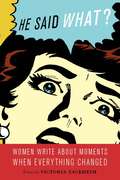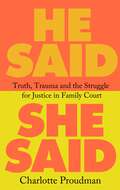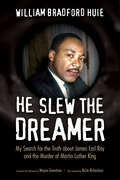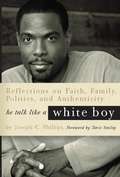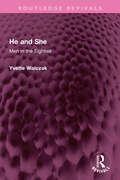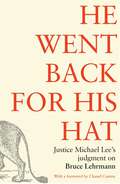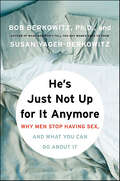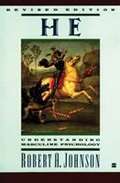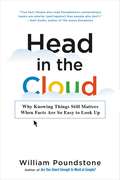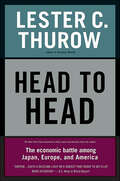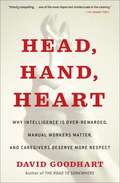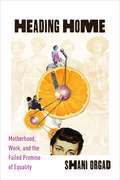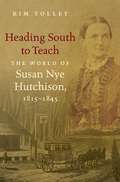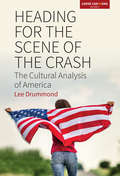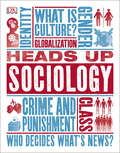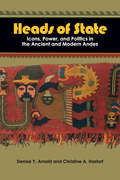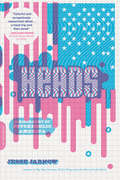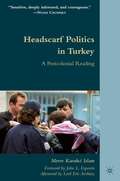- Table View
- List View
He Said What?
by Victoria ZackheimI love you. The meeting ran late. I want a divorce. One little word, one casual lie, one devastating announcement-and our lives are turned upside down forever.In He Said What?, twenty-six gifted women writers share profoundly personal moments in which a man in their life said something-good or bad-that changed them irrevocably. Joyce Maynard reveals the profound humiliation and trauma she suffered when, after dropping out of Yale to move in with J.D. Salinger at just 18, he suddenly ordered her to pack her bags and leave. Author and screenwriter Amy Ferris writes about what her father said to her after she dropped out of high school at 15--right before she flew across the country to hitchhike her way from San Francisco to an Oregon commune.With additional contributions from Dr. Margot Duxler, Beverly Donofrio, Sherry Glaser, Abby Frucht, Jane Ganahl, Christine Kehl O'Hagan, Susanne Dunlap, and Caroline Leavitt, this is a beautifully-penned, intimate collection of stories about the powerful impact that the right-or the wrong-words can have on a person's life.
He Said, She Said: Truth, Trauma and the Struggle for Justice in Family Court
by Dr Charlotte ProudmanIf you and your family needed help, could you trust the law to be on your side?Award-winning barrister Charlotte Proudman has dedicated her working life to representing women who find themselves in need of help from the family law courts. Time and again, she has watched as these women are let down by the system that is supposed to protect them. Seeking only justice and safety, they have instead been met with cruelty and disdain, deemed unreliable witnesses compared to the men who abused them.From family courts failing to protect victims from abusers to the misogynistic bullying Charlotte herself receives from senior members of her profession, the problem is clear: no matter their circumstances, women across the country are suffering at the hands of a legal system built by men.But change is on the horizon. In He Said, She Said, Proudman gives voice to the women whose stories are all too often brushed aside in the name of giving abusers 'the benefit of the doubt'. Through real-life cases spanning forced marriage, domestic abuse, child abduction and female genital mutilation, Proudman highlights the troubling biases and shocking prejudice that underlie our legal system - and in a book that is at once thrilling, engaging and deeply compassionate, puts forward her own inspiring vision for long-term change.
He Slew the Dreamer: My Search for the Truth about James Earl Ray and the Murder of Martin Luther King
by William Bradford HuieAuthor William Bradford Huie was one of the most celebrated figures of twentieth-century journalism. A pioneer of "checkbook journalism," he sought the truth in controversial stories when the truth was hard to come by. In the case of James Earl Ray, Huie paid Ray and his original attorneys $40,000 for cooperation in explaining his movements in the months before Martin Luther King’s assassination and up to Ray’s arrest weeks later in London. Huie became a major figure in the investigation of King’s assassination and was one of the few persons able to communicate with Ray during that time.Huie, a friend of King, writes that he went into his investigation of Ray believing that a conspiracy was behind King’s murder. But after retracing Ray’s movements through California, Louisiana, Mexico, Canada, Atlanta, Birmingham, Memphis, and London, Huie came to believe that James Earl Ray was a pathetic petty criminal who hated African Americans and sought to make a name for himself by murdering King. He Slew the Dreamer was originally published in 1970 soon after Ray went to prison and was republished in 1977, but was out of print until the 1997 edition, published with the cooperation of Huie’s widow.This new edition features an essay by scholar Riché Richardson that provides fresh insight, and it includes the 1977 prologue, which Huie wrote countering charges by members of Congress, the King family, and others who claimed the FBI had aided and abetted Ray. In 1970, 1977, 1997, and now, He Slew the Dreamer offers a remarkably detailed examination of the available evidence at the time the murder occurred and an invaluable resource to current debates over the King assassination.
He Talk Like a White Boy: Reflections of a Conservative Black Man on Faith, Family, Politics, and Authenticity
by Joseph C. PhillipsActor and social commentator Joseph C. Phillips speaks powerfully about the topic of life as a conservative African-American actor, husband, father, and citizen. In today's political climate, with race such an issue, this collection of essays is not only timely, but thought provoking.Like Democratic candidate for President Barack Obama, Phillips has had his authenticity as a black man questioned by members of his own race, for trivial reasons such as the way he speaks, his choices in music, politics, faith, and family. Also like Obama, Phillips has often been accused of not being "black enough," while, as an actor, he has encountered even more pointing fingers for not being liberal enough. With a frank voice, this brilliant and outspoken author presents a series of witty and provocative essays that examine life as a conservative African-American, and the simple fact that authenticity is far more complicated than one's choice of words.
He and She: Men in the Eighties (Routledge Revivals)
by Yvette WalczakFirst published in 1988, He and She is about male attitudes to sex and gender in the 1980s. It examines the extent to which men consider themselves to be different from women in a number of areas, including interests, aptitudes, friendships and intimate relationships with partners and children. Issues of sex and gender are located within the varied settings of education and employment. Comparisons are made between ideal situations and attitudes and what men have been able to implement in practice. The book is based on interviews with 51 men, aged from 17 to 90, from a variety of cultural and occupational backgrounds. Extensive use is made of verbatim material from interviews and biographical details. This information is conveyed to the reader against the backcloth of a historical perspective and studies and research on male/female issues. This book will be of interest to students of men’s studies, gender studies, women’s studies, and sociology.
He went back for his hat: Justice Michael Lee on Bruce Lehrmann
by Justice Michael Lee'Having escaped the lions' den, Mr Lehrmann made the mistake of going back for his hat.' Justice Michael Lee with an introduction by Chanel Contos On 15 April 2024 Justice Michael Lee delivered his judgment in Lehrmann v Network 10. The case, which centred on proceedings brought by Bruce Lehrmann against journalist Lisa Wilkinson and Network 10 for her 2021 interview with Brittany Higgins, alleged that Wilkinson had defamed Lehrmann by accusing him of raping Higgins at Parliament House in 2019. It was a singular case, and the controversy has become a cause c�l�bre, described by the judge himself as an 'omnishambles'. In his decision, Justice Lee laid out his reasoning in painstaking detail, and presented his close-grained reading of the evidence based on its subtleties. Critically for future sexual assault matters, his was a trauma-informed judgment that understood that the recollections of an assault victim can be inconsistent, affected by the attempted memory corrections of a traumatised person. The findings are notable for their valuable insights into future defamation and sexual assault prosecutions and for judicial education and the media. A masterclass of legal dissection, the narrative shows what civil courts can sometimes achieve in a way that criminal courts cannot.
He's Just Not Up for It Anymore: Why Men Stop Having Sex, and What You Can Do About It
by Susan Yager-Berkowitz Bob BerkowitzAn estimated twenty million American men and women are in relationships in which the man has stopped being sexually intimate. Is the problem physical, emotional, or psychological—or are these guys simply bored with their partners?To find answers, bestselling author and relationship expert Dr. Bob Berkowitz and his wife, Susan Yager-Berkowitz, began an unprecedented survey of more than four thousand men and women in this situation, gathering data and following up with hundreds of interviews with selected respondents. Why Men Stop Having Sex provides a unique window into the sexless man's mind—so that men and women can understand this important issue and begin to address the problems that have inhibited intimacy, and ultimately solve them.
He's a Stud, She's a Slut, and 49 Other Double Standards Every Woman Should Know
by Jessica ValentiDouble standards are nothing new. Women deal with them every day. Take the common truism that women who sleep around are sluts while men are studs. Why is it that men grow distinguished and sexily gray as they age while women just get saggy and haggard? Have you ever wondered how a young woman is supposed to both virginal and provocatively enticing at the same time? Isn't it unfair that working moms are labeled "bad" for focusing on their careers while we shake our heads in disbelief when we hear about the occasional stay-at-home dad?In 50 Double Standards Every Woman Should Know, Jessica Valenti, author of Full Frontal Feminism, calls out the double standards that affect every woman. Whether Jessica is pointing out the wage earning discrepancies between men and women or revealing all of the places that women still aren't equal to their male counterparts-be it in the workplace, courtroom, bedroom, or home-she maintains her signature wittily sarcastic tone. With sass, humor, and in-your-face facts, this book informs and equips women with the tools they need to combat sexist comments, topple ridiculous stereotypes (girls aren't good at math?), and end the promotion of lame double standards.
He/She/They: How We Talk About Gender and Why It Matters
by Schuyler BailarFrom a trans rights activist and athlete, an urgent guide that changes the conversation about gender identity. Anti-transgender legislation is being introduced in state governments around the United States in record-breaking numbers. Trans people are under attack in sports, healthcare, school curriculum, bathrooms, bars, and nearly every walk of life. He/She/They compassionately addresses fundamental topics, from why being transgender is not a choice and why pronouns are important, to more complex issues including how gender-affirming healthcare can be lifesaving. With a relatable narrative rooted in science, and history, Schuyler helps restore common sense and humanity to a discussion that continues to be divisively coopted and deceptively politicized. He/She/They is more than a book on allyship; it also speaks to trans folks directly, celebrating radical trans joy. National Bestseller Winner, 2023 Porchlight Business Book Awards Longlisted, 2024 Carnegie Medals for Excellence in Nonfiction Forbes 30 Under 30
He: Understanding Masculine Psychology
by Robert A. JohnsonWhat does it really mean to be a man? What are some of the landmarks along the road to mature masculinity? And what of the feminine components of a man's personality? <p><p> Women do not really know as much about men as they think they do. They have developed, over the centuries, considerable expertise in the technique of adapting to men, but that is not the same as truly understanding them. Women often labor under the delusion that life is really pretty easy for men, at least when compared to their own lot, and they have no idea what a complicated struggle is really involved in the transition from male childhood to real manhood. <p> As timely today as when it was first published, He provides a fascinating look into male identity and how female dynamics influence men.
Head Over Heels: Wives Who Stay with Cross-Dressers and Transsexuals
by Virginia ErhardtCandid, first-hand accounts of couples who stay together despite highly emotional gender issues. Head Over Heels gives voice to thirty ordinary women who live extraordinary lives as partners to crossdressers, transgenderists, and male-to-female transsexuals. These unique women discuss, with honesty and great candor, how they first learned of their partners’ gender issues, how they’ve coped with the emotions that followed, how they’ve dealt with concerns about privacy/secrecy, and how they’ve handled disclosure to children, friends, and family members. Far from a collection of “happily ever after” stories, these narratives are filled with pain, courage, curiosity, and joy as each woman struggles to redefine a relationship that includes intimacy, social acceptance, dignity, and respect. The women whose stories are featured in Head Over Heels didn't know their partners were gender-variant when they first met. Some found out early on; others learned of their husbands' gender variance after decades of marriage. Some were told by their husbands—men they considered “regular guys;” others found out on their own, sometimes in shocking ways. Their stories represent a wide spectrum of women's life experiences with crossdressers, transgenderists, transsexuals who are nonoperative, pre-operative, and post-operative, families without children, families with children at home, and families with children who have left home. But these women share one thing in common: each has decided to stay in her relationship, exploring her new life with an open, yet cautious, heart. Some of the voices heard in Head Over Heels: “While putting my clothes on, I found a sales receipt on the bureau from K-Mart for shoes, a bra, and stockings. My immediate thought was that my husband had a girlfriend.” “He dressed for me one night and it was the worst experience of both our lives. I was shocked and he knew it and that hurt him.” “My siblings had been aware of Trish’s transsexualism for several years when she went full-time. They have told me that while I will always be welcome in their homes, Trish is not.” “My husband may think differently, but I do have a sexual identity. Actually, I’m real clear about it—I am a woman and he is a man. I do not allow him to crossdress in the bedroom. I married a man; therefore, I will sleep with a man.” Head Over Heels also includes historical and current information about resources and support for wives of gender-variant people, and a substantive introduction that includes basic information about sexual and gender identity and related issues.
Head Shot
by G. Paul ChambersFor anyone seeking a fresh understanding of the JFK assassination, this is an indispensable book. After more than four decades and scores of books, documentaries, and films on the subject, what more can be said about the assassination of President John F. Kennedy? A great deal, according to the author. This provocative, rigorously researched book presents evidence and compelling arguments that will make you rethink the entire sequence of terrible events on that traumatic day in Dallas. Drawing on his fifteen years of experience as an experimental physicist for the US Navy, the author demonstrates that the commonly accepted view of the assassination is fundamentally flawed from a scientific perspective. The physics behind lone-gunmen theories is not only wrong, says Chambers, but frankly impossible.This is the first book to: identify the second murder weapon, prove the locations of the assassins, and demonstrate multiple shooters with scientific certainty. It concludes with a persuasive chapter on why this horrible event, now almost half a century old, should still matter to us today. Originally published as a hardcover in 2010, this paperback edition contains a new preface and postscript in which the author addresses some interesting developments since the book was first published as well as the upcoming fiftieth anniversary of the assassination.
Head in the Cloud: Why Knowing Things Still Matters When Facts Are So Easy to Look Up
by William PoundstoneThe real-world value of knowledge in the mobile-device age.More people know who Khloe Kardashian is than who Rene Descartes was. Most can't find Delaware on a map, correctly spell the word occurrence, or name the largest ocean on the planet. But how important is it to fill our heads with facts? A few keystrokes can summon almost any information in seconds. Why should we bother learning facts at all?Bestselling author William Poundstone confronts that timely question in HEAD IN THE CLOUD. He shows that many areas of knowledge correlate with the quality of our lives--wealth, health, and happiness--and even with politics and behavior. Combining Big Data survey techniques with eye-opening anecdotes, Poundstone examines what Americans know (and don't know) on topics ranging from quantum physics to pop culture. HEAD IN THE CLOUD asks why we're okay with spelling errors on menus but not on resumes; why Fox News viewers don't know which party controls Congress; why people who know "trivia" make more money than those who don't; how individuals can navigate clickbait and media spin to stay informed about what really matters. Hilarious, humbling, and wildly entertaining, HEAD IN THE CLOUD is a must-read for anyone who doesn't know everything.
Head of the Mountain: A Western Novel (A\black Horse Westerns Ser.)
by Ernest HaycoxFRIEND AGAINST FRIEND…AND ONE MUST DIE!HEAD OF THE MOUNTAIN is a masterful story of two men, best friends, who must ride to a bloody confrontation on a cold and starless night. At the Head of the Mountain, their trails would cross, and for one of them the trail would end…Hugh Rawson was tired as hell of running. He’d come back to the remote Oregon Territory for three good reasons. He was bent on squaring off with the killer who’d used him for target practice. He was determined to track down the dirty bunch who’d been stealing his gold. And he was honor bound to fight to kill the man who was his best friend, a friend who was stealing the only woman he ever loved.A classic novel of the Old West, from the powerful pen of a Western master!
Head to Head: The Economic Battle Among Japan, Europe, and America
by Lester C. ThurowThe classic text on the post-Cold War economic battle. Starting with the fall of communism, influential economist and former dean of MIT's Sloan School of Management Lester Thurow deftly explores how head-to-head competition -- not military might -- among Japan, the United States, and the newly united European countries would produce the next world leader. As Thurow explains, in the 1990s the race for economic supremacy was only just beginning. In a world no longer governed by two military superpowers, the stage was set for a dramatic shoot-out among the world's most powerful national economies. Using analytical data, key insights, and common sense, Thurow presents a solid economic game plan for the United States to follow in order to win this battle and attain dominance in the global economy.
Head, Hand, Heart: Why Intelligence Is Over-Rewarded, Manual Workers Matter, and Caregivers Deserve More Respect
by David GoodhartA Financial Times Best Book of the Year 2020 A TIMELY AND PROVOCATIVE ARGUMENT FROM LEADING POLITICAL ANALYST DAVID GOODHART ABOUT THE SEVERELY IMBALANCED DISTRIBUTION OF STATUS AND WORK IN WESTERN SOCIETIES.The coronavirus pandemic revealed what we ought to have already known: that nurses, caregivers, supermarket workers, delivery drivers, cleaners, and so many others are essential. Until recently, this work was largely regarded as menial by the same society that now lauds them as heroes. How did we get here? In his groundbreaking follow-up to the bestselling The Road to Somewhere, David Goodhart divides society into people who work with their Heads (cognitive work), with their Hands (manual work), or with their Hearts (caring work), and considers each group&’s changing status and influence. Today, the &“best and the brightest&” trump the &“decent and hardworking.&” Qualities like character, compassion, craft, and physical labor command far less respect in our workforce. This imbalance has led to the disaffection and alienation of millions of people. David Goodhart reveals the untold history behind this disparity and outlines the challenges we face as a result. Cognitive ability has become the gold standard of human esteem, and those in the cognitive class now shape society largely in their own interest. To put it bluntly: smart people have become too powerful. A healthy democratic society respects and rewards a broad range of achievement, and provides meaning and value for people who cannot—or do not want to—achieve in the classroom and professional career market. We must shift our thinking to see all workers as essential, and not just during crises like the coronavirus pandemic. This is the dramatic story of the struggle for status and dignity in the 21st century.
Heading Home: Motherhood, Work, and the Failed Promise of Equality
by Shani OrgadWomen in today’s advanced capitalist societies are encouraged to “lean in.” The media and government champion women’s empowerment. In a cultural climate where women can seemingly have it all, why do so many successful professional women—lawyers, financial managers, teachers, engineers, and others—give up their careers after having children and become stay-at-home mothers? How do they feel about their decision and what do their stories tell us about contemporary society?Heading Home reveals the stark gap between the promise of gender equality and women’s experience of continued injustice. Shani Orgad draws on in-depth, personal, and profoundly ambivalent interviews with highly educated London women who left paid employment to take care of their children while their husbands continued to work in high-powered jobs. Despite identifying the structural forces that maintain gender inequality, these women still struggle to articulate their decisions outside the narrow cultural ideals that devalue motherhood and individualize success and failure. Orgad juxtaposes these stories with media and policy depictions of women, work, and family, detailing how—even as their experiences fly in the face of fantasies of work-life balance and marriage as an egalitarian partnership—these women continue to interpret and judge themselves according to the ideals that are failing them. Rather than calling for women to transform their feelings and behavior, Heading Home argues that we must unmute and amplify women’s desire, disappointment, and rage, and demand social infrastructure that will bring about long-overdue equality both at work and at home.
Heading South to Teach
by Kim TolleySusan Nye Hutchison (1790-1867) was one of many teachers to venture south across the Mason-Dixon Line in the Second Great Awakening. From 1815 to 1841, she kept journals about her career, family life, and encounters with slavery. Drawing on these journals and hundreds of other documents, Kim Tolley uses Hutchison's life to explore the significance of education in transforming American society in the early national period. Tolley examines the roles of ambitious, educated women like Hutchison who became teachers for economic, spiritual, and professional reasons. During this era, working women faced significant struggles when balancing career ambitions with social conventions about female domesticity. Hutchison's eventual position as head of a respected southern academy was as close to equity as any woman could achieve in any field. By recounting Hutchison's experiences--from praying with slaves and free blacks in the streets of Raleigh and establishing an independent school in Georgia to defying North Carolina law by teaching slaves to read--Tolley offers a rich microhistory of an antebellum teacher. Hutchison's story reveals broad social and cultural shifts and opens an important window onto the world of women's work in southern education.
Heading for the Scene of the Crash: The Cultural Analysis of America (Loose Can(n)ons #3)
by Lee DrummondAmerican anthropologists have long advocated cultural anthropology as a tool for cultural critique, yet seldom has that approach been employed in discussions of major events and cultural productions that impact the lives of tens of millions of Americans. This collection of essays aims to refashion cultural analysis into a hard-edged tool for the study of American society and culture, addressing topics including the 9/11 terrorist attacks, abortion, sports doping, and the Jonestown massacre-suicides. Grounded in the thought of Friedrich Nietzsche, the essays advance an inquiry into the nature of culture in American society.
Heads Up Sociology (DK Heads UP)
by DKWhy does racism exist? Is Big Brother watching us? Why are women paid less than men? Investigate society&’s hidden truths, from gender and identity politics to consumer culture with this insightful guide.Sociology is the study of how societies are organized and what helps them function or go wrong. Heads Up Sociology explores a range of curious social phenomena, including poverty and class status, white-collar crime, religious beliefs, and internet anxieties. The book helps readers see themselves and their communities in the context of a larger, globalized world. Fascinating biographies offer insight into the lives and work of key researchers such as Karl Marx, Judith Butler, and Howard Becker, while well-illustrated case studies and real-life scenarios bring their ideas to life. Stunning infographics further explain the ebb and flow of power in society. Heads Up Sociology is the ultimate tool to help you get to grips with sociology in time for exams and is an essential read for anyone keen to ask the big questions about the world we live in today.
Heads of State: Icons, Power, and Politics in the Ancient and Modern Andes
by Denise Y Arnold Christine A HastorfThe human head has had important political, ritual and symbolic meanings throughout Andean history. Scholars have spoken of captured and trophy heads, curated crania, symbolic flying heads, head imagery on pots and on stone, head-shaped vessels, and linguistic references to the head. In this synthesizing work, cultural anthropologist Denise Arnold and archaeologist Christine Hastorf examine the cult of heads in the Andes—past and present—to develop a theory of its place in indigenous cultural practice and its relationship to political systems. Using ethnographic and archaeological fieldwork, highland-lowland comparisons, archival documents, oral histories, and ritual texts, the authors draw from Marx, Mauss, Foucault, Assadourian, Viveiros del Castro and other theorists to show how heads shape and symbolize power, violence, fertility, identity, and economy in South American cultures.
Heads: A Biography of Psychedelic America
by Jesse JarnowHeads: A Biography of Psychedelic America uncovers a hidden history of the biggest psychedelic distribution and belief system the world has ever known. Through a collection of fast-paced interlocking narratives, it animates the tale of an alternate America and its wide-eyed citizens: the LSD-slinging graffiti writers of Central Park, the Dead-loving AI scientists of Stanford, utopian Whole Earth homesteaders, black market chemists, government-wanted Anonymous hackers, rogue explorers, East Village bluegrass pickers, spiritual seekers, Internet pioneers, entrepreneurs, pranksters, pioneering DJs, and a nation of Deadheads.WFMU DJ and veteran music writer Jesse Jarnow draws on extensive new firsthand accounts from many never-before-interviewed subjects and a wealth of deep archival research to create a comic-book-colored and panoramic American landscape, taking readers for a guided tour of the hippie highway filled with lit-up explorers, peak trips, big busts, and scenic vistas, from Vermont to the Pacific Northwest, from the old world head capitals of San Francisco and New York to the geodesic dome--dotted valleys of Colorado and New Mexico. And with the psychedelic research moving into the mainstream for the first time in decades, Heads also recounts the story of the quiet entheogenic revolution that for years has been brewing resiliently in the Dead's Technicolor shadow.Featuring over four dozen images, many never before seen--including pop artist Keith Haring's first publicly sold work--Heads weaves on of the 20th and 21st centuries' most misunderstood subcultures into the fabric of the nation's history. Written for anyone who wondered what happened to the heads after the Acid Tests, through the '70s, during the Drug War, and on to the psychedelic present, Heads collects the essential history of how LSD, Deadheads, tie-dye, and the occasional bad trip have become familiar features of the American experience.
Headscarf Politics in Turkey
by Merve Kavakci IslamThis book questions the 'role model' status of the Turkish Republic with respect to the advancement of female agency in a secular context by using the study of women with headscarves as a case in point. Turkey's commitment to modernization depends heavily on secularism which involves, among other things, the westernization of women's appearance.
Headscarves and Hymens: Why the Middle East Needs a Sexual Revolution
by Mona Eltahawy<p>The journalist Mona Eltahawy is no stranger to controversy. Through her articles and actions she has fought for the autonomy, security, and dignity of Muslim women, drawing vocal supporters and detractors. Now, in her first book, Headscarves and Hymens, Eltahawy has prepared a definitive condemnation of the repressive forces--political, cultural, and religious--that reduce millions of women to second-class citizens. <p>Drawing on her years as a campaigner for and commentator on women's issues in the Middle East, she explains that since the Arab Spring began in 2010, women in the Arab world have had two revolutions to undertake: one fought alongside men against oppressive regimes, and another fought against an entire political and economic system that represses women in Egypt, Saudi Arabia, Tunisia, Libya, Yemen, and other nations. <p>Eltahawy has traveled across the Middle East and North Africa, meeting with women and listening to their stories. Her book is a plea for outrage and action on their behalf, confronting a "toxic mix of culture and religion that few seem willing or able to disentangle lest they blaspheme or offend." A manifesto motivated by hope and fury in equal measure, Headscarves and Hymens is as illuminating as it is incendiary.</p>
Headscarves and Hymens: Why the Middle East Needs a Sexual Revolution
by Mona Eltahawy'Shocking, heartfelt and well-researched' New Statesman'A ground-shaping book that defines the edge of so many vital contemporary debates. Hers is a voice simultaneously behind and beyond the veil' Colum McCann'A fascinating, can't-look-away, whistle-stop tour of the Middle East' Daily Telegraph'Brave and impassioned . . . A shocking book, and one that will make anyone who has seen veiling as a cultural issue think very hard about what is really going on' Mail on SundayHeadscarves and Hymens explodes the myth that we should stand back and watch while women are disempowered and abused in the name of religion. In this laceratingly honest account, Eltahawy takes aim both at attitudes in the Middle East and at the western liberals who mistake misogyny for cultural difference. Her argument is clear: unless political revolution in the Arab world is accompanied by social and sexual revolution, no progress will be made.Headscarves and Hymens is the book the world has been crying out for: a powerful, fearless account of what it really means to be a woman in the Muslim world. 'A fascinating, can't-look-away, whistle-stop tour of the Middle East' Daily Telegraph'Brave and impassioned . . . A shocking book, and one that will make anyone who has seen veiling as a cultural issue think very hard about what is really going on' Mail on Sunday
